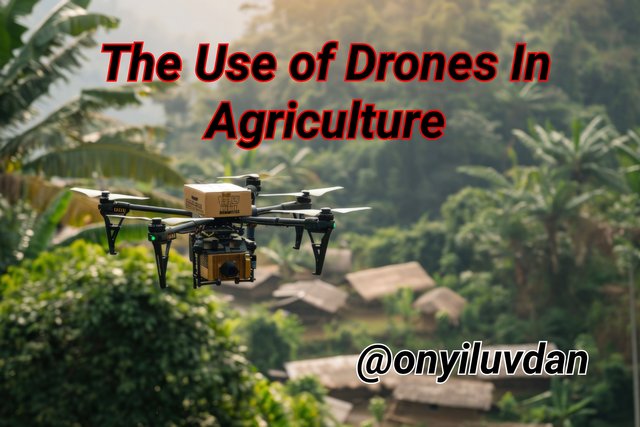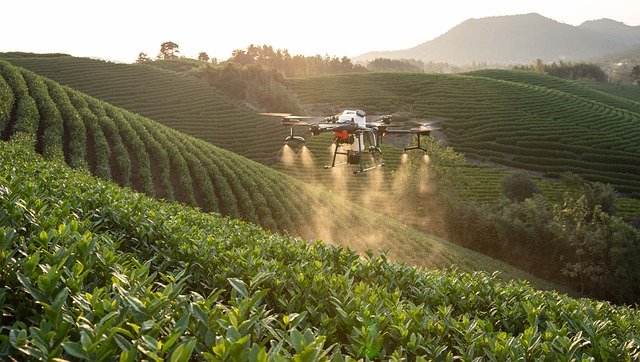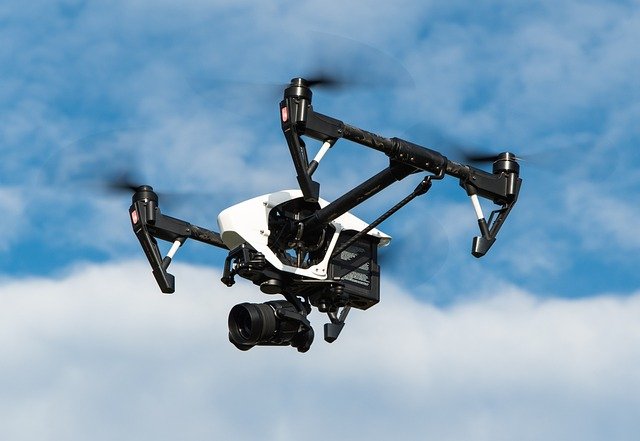SEC | S20W6: "The Use Of Drones in Agriculture"
Hello, my fellow Steemians, I am glad to be dropping my entry on this topic, so I welcome every one of us to my blog.
 Source Edited Source Edited |
|---|
Agriculture is being revolutionized by drones as they present farmers with efficient aerial devices for monitoring fields and crops. Drone offers a basket full of blessings that not only contribute to performance but also sustainability:
Drones that are furnished with extreme-decision cameras and sensors enable farmers to collect data on crop health and identify, on time, challenges such as pest infestations, illness, or nutrient deficiencies. This allows for focused and centered action, impeding loss of yield and enhancing resource efficiency.
Drones that have multispectral cameras can give chart differences in the health of crops across a region. This information offers assistance in the precision use of water, fertilizer, and pesticides, plummeting environmental impact as well as waste.
A specific subject imagery can be captured with a drone to identify elevation differences, probable irrigation problems, or drainage patterns. This allows for making increased plans for the irrigation systems as well as the appropriation of help.
Drones serve to reconnoiter a granitic terrain or tall plants for the reduction of hazards for farmers. Additionally, they can rapidly and successfully cover a vast area, saving time and reducing labor costs.
Drones are useful to conspicuously show the health of herds, display livestock motion, or find out where a lacking animal in a vast field is, enhance animal well-being as well as farm management.
Across the board, drones are estimable equipment for contemporary agriculture, advocating and encouraging information-driven decision-making, effective utilization of resources as well as sustainable agricultural practices.
 Source Source |
|---|
- Drones Contribution To Precision And Efficiency In Agricultural Practices
Mapping and Estimation of Yield: Drones are essential for the appraisal of yield through crop health and density analysis. This information helps in crop planning and logistics, guaranteeing an additional effective operation.
Monitoring of Crop and Assessment of Health: Drones can rapidly and efficiently survey a large region, spotting out challenges such as water stress, nutrient deficiencies, disease and pest infestation, etc. With the aid of multispectral or thermal imagery, drones can evaluate plant health through the quantification of the reflectance of crops to a particular light wavelength.
Field and Soil Analysis: Prior to planting, drones are used for the provision of valuable statistics on the degree of moisture, soil health, as well as topography. This knowledge is very vital for planning and planting arrangements and the amelioration of irrigation systems.
Variable Rate Application (VRA): With meticulous statistics from drones, farmers can apply the required proportion of fertilizers, water, and pesticides at the proper place and time. This focused approach makes certain that crops get all requisite for ideal growth, reduction in wastage, and environmental effects.
- Benefits Of Using Drones In Agriculture
Cost Savings: The reduction of fertilizers, water, pesticides, etc., results in a veritable savings of cost over time.
Ameliorated Yield and Efficiency: Through the precise application of resources where required, farmers can significantly heighten their operational effectiveness and strongly amplify crop yields.
Data-Driven Decisions: The abundance of statistics collected by drones allows for additional knowledge-based decision-making and improvement of across-the-board farm management.
Plummeted Environmental Impact: The application of inputs (water, fertilizers, pesticides) characterized by accuracy lowers the probability of environmental contamination and runoff, supporting and contributing to more sustainable agricultural practices.
- Monitoring Soil Moisture:
Drones-mounted multispectral cameras can accurately quantify the temperature of the soil as well as the moisture. Keeping an eye on the soil moisture is important for the prevention of excessive irrigation or drought stress, both of which can be hazardous to crop growth. With this information, farmers can make adjustments to their irrigation practices, conserving water and ensuring plants get the required proportion of moisture for ideal health.
- Detection of Nutrient and pH Level:
Thermal (multispectral) sensors on drones are also able to detect particular groups of energy levels of light reflected from the soil, showing the soil's pH and nutrient level. This allows farmers to examine the soil's acidic or alkaline level, which helps in identifying which region needs additional targeted fertilization. The response to the collection of this data allows fast interference to keep ideal growth conditions for crops.
- Precision Soil Mapping
Drones mounted with both multispectral and hyperspectral cameras make 3D images of fields, enabling farmers to make soil features explicit. These images can elucidate soil composition differences, organic content, as well as moisture levels across the field. By specifying areas of deficiency in nutrition or rough moisture distribution, the farmers can tackle specific issues within excessive utilization of fertilizers, water, or pesticides. This approach doesn't only improve crop yield but also lowers environmental impacts.
 Source Source |
|---|
Multispectral and hyperspectral imaging are vital for the surveillance of land cover and vegetation transition, tracking forest health, and the management of invasive species. They can additionally track the degradation of land and soil erosion and offer estimable information for soil preservation and management of land.
They are valuable tools for soil mapping and surveillance of soil moisture as well as nutrient content, enabling farmers to efficiently apply nutrients and water and lessen the utilization of pesticides and fertilizers. Consequently, crop yield is enhanced, and agricultural environmental impact is diminished.
Additionally, by tracking the variations of reflectant light wavelength from plants, multispectral and hyperspectral imaging can equally pick out crol stress resulting from drought, disease, or nutrient deficiency, enabling farmers take corrective measures.
Drones have helped in soil mapping and are important for precision farming in the following ways:
- Monitoring and management of crop
- Precision input application
- Management of water
- Estimation of yield
- Post-Harvest analysis
Inviting @ninapenda, @chilaw, and @chima09
Welcome to the agro-learning challenge season 20.
Observations and suggestions:
. Nice explanation! These roles of drones are inevitable to the continued sustainability and promotion of food security. They have helped brought about advancement in the manner crop and livestock farming are carried. While its efficiency is characterized by time-saving, cost-effectiveness, and reduction in chemicals and disease infestation, it comes with benefits and other vital options.
. Good explanation! To monitor soil moisture and nutrients, the thermal, multispectral, and hyperspectral imaging sensor feature is essential in playing a great role.
Thank you for your participation. We hope to continue in the next season.
Thank you, sir, for that review.